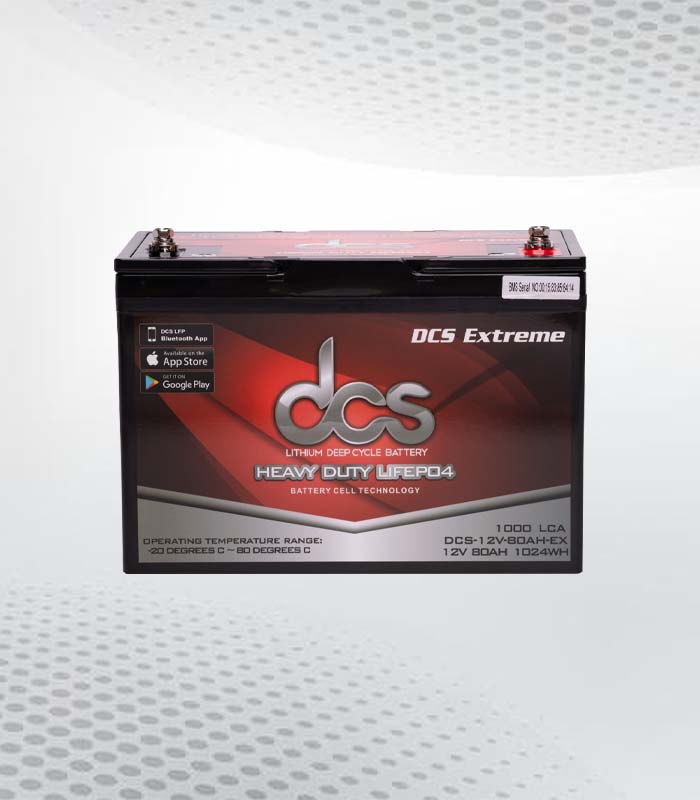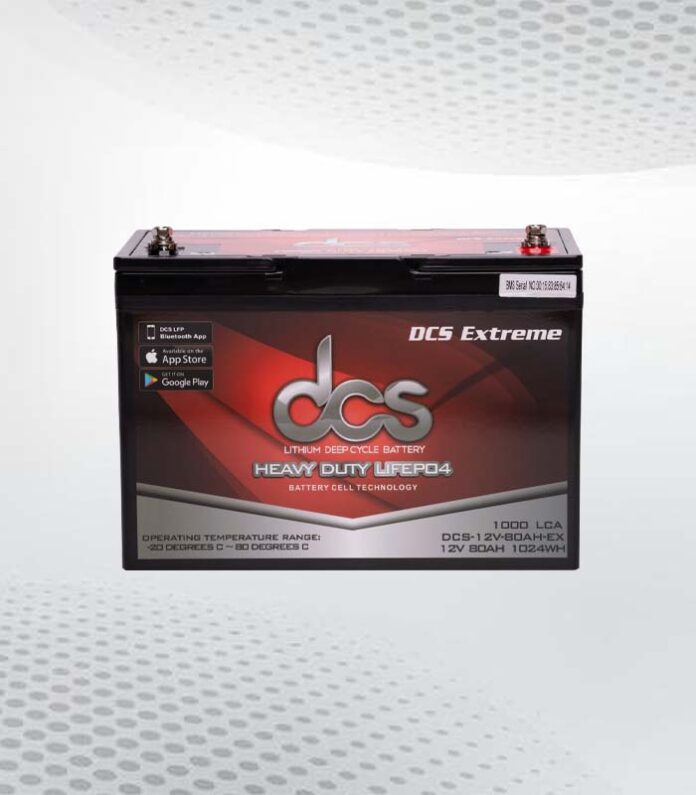When powering up your applications, selecting the best deep cycle battery can make all the difference. Deep-cycle batteries are designed to provide reliable, consistent power over a longer period, making them ideal for powering up boats, RVs, golf carts, and other similar applications. But with so many available options, how do you choose the best one for your needs? In this blog post, we will explore the top considerations and features to consider when selecting the best deep-cycle battery.
Understanding the Purpose of the Best Deep Cycle Battery
If you’re planning to use your boat, RV, golf cart, or any other application for a longer period, a deep-cycle battery is your best bet. Unlike regular automotive batteries that provide short bursts of power, deep-cycle batteries are designed to deliver a consistent flow of power over an extended period. They are called deep-cycle batteries because they can be discharged and recharged multiple times without damaging the battery, making them ideal for long-term use.
With the best deep cycle battery, you can enjoy uninterrupted power for your applications, whether boating, camping, or going on a road trip. These batteries are also great for solar energy systems, backup power supplies, and similar applications. The best deep-cycle battery is designed to provide reliable, consistent power that meets your power requirements, no matter how demanding. So, if you’re looking for a power solution that won’t let you down, investing in the best deep-cycle battery is worth it.
Evaluating the Battery Type
Choosing the right battery type for your application is crucial in getting the best deep-cycle battery. There are three main types of deep-cycle batteries: flooded, sealed, and lithium-ion. Flooded batteries are the most common and cost-effective option. However, they require regular maintenance, such as checking and refilling the water level, which can be time-consuming and messy. Sealed batteries, conversely, are maintenance-free and don’t require topping up.
They’re perfect for applications where regular maintenance isn’t practical or possible, but they come with a higher price tag. Lastly, lithium-ion batteries are the most expensive but offer the highest efficiency and longest lifespan and are the most lightweight. They are perfect for applications where weight and size are a concern, such as marine or RV use. When evaluating the battery type, consider your application’s needs, budget, and maintenance capabilities. By choosing the right battery type, you can ensure that your deep-cycle battery meets your requirements and provides reliable power over a longer period.
Checking the Battery Capacity
When selecting the best deep-cycle battery for your application, battery capacity is a crucial factor to consider. It determines how much power the battery can store and deliver over time. To ensure your battery provides uninterrupted power, choose one with a capacity that meets or exceeds the power requirements of your application.
For example, if you’re using a deep-cycle battery to power your RV, you’ll need a battery with a higher capacity than if you were using it to power a golf cart.
Remember, the higher the battery capacity, the longer it can power your applications. So, it’s always better to choose a battery with a higher capacity than you need to ensure you have enough power when you need it.
By checking the battery capacity and selecting one that’s right for your application, you can enjoy worry-free boating, camping, or road trips without worrying about running out of power. So, choose wisely and keep the energy flowing with the best deep-cycle battery!
 Considering the Battery Lifespan of Best Rated Deep Cycle Battery
Considering the Battery Lifespan of Best Rated Deep Cycle Battery
When selecting best rated deep cycle battery for your application, the battery lifespan is a crucial factor to consider. The battery lifespan refers to how long the battery can provide reliable power before needing to be replaced. While deep-cycle batteries are designed for long-term use, the lifespan can vary depending on various factors, such as the battery type, quality, maintenance, and usage.
Generally, flooded lead-acid batteries have a 3-5 years lifespan, while sealed lead-acid batteries can last up to 5-7 years. Lithium-ion batteries have the longest lifespan of up to 10 years or more.
It’s important to note that the battery lifespan can be affected by various factors, such as the frequency of discharge and recharge cycles, the operating temperature, and the maintenance and storage conditions. To maximize the battery lifespan, it’s essential to follow the manufacturer’s recommendations for maintenance and usage, such as avoiding over-discharging or overcharging the battery and storing it in a cool, dry place. By considering the battery lifespan and choosing a high-quality, well-maintained battery, you can ensure reliable power solutions for your applications for years to come.
Looking at the Discharge and Recharge Efficiency
Efficiency is key when selecting the best deep-cycle battery for your needs. Discharge and recharge efficiency refer to how effectively a battery can release and store power. The higher the efficiency, the longer the battery can provide power before recharging. This is especially important for applications that require a constant power flow, such as boats or RVs. So, when looking for a deep-cycle battery, check the discharge and recharge efficiency ratings.
Lithium-ion batteries are known for their high efficiency, making them a great option if you need a battery that can keep up with your power demands. However, remember that high-efficiency batteries can come with a higher price tag. Ultimately, the efficiency of your battery will determine how long you can enjoy uninterrupted power for your applications. So, choose wisely and power up with the best deep-cycle battery that meets your efficiency needs.
Understanding the Impact of Temperature on Best Value Deep Cycle Battery Performance
Temperature can significantly impact the performance of the best-value deep-cycle battery you select. The battery’s efficiency, lifespan, and capacity can all be affected by extreme temperatures. High temperatures can accelerate the battery’s discharge rate, shortening its lifespan and reducing capacity. On the other hand, low temperatures can reduce the battery’s ability to provide power, making it less efficient.
When selecting the best value deep cycle battery, it’s important to consider the temperature range that your application will be exposed to. Look for batteries that can operate within your applications specified temperature range, whether in hot or cold weather conditions. Additionally, consider investing in battery accessories, such as thermal insulation, to help regulate the battery’s temperature and improve its performance. By considering temperature, you can ensure that your battery provides reliable power solutions for your applications, regardless of the weather conditions. Don’t let temperature fluctuations affect your power supply; choose the best deep-cycle battery to withstand heat and cold.
Determining the Battery Size and Weight
When it comes to selecting the best deep-cycle battery for your needs, the size and weight of the battery are essential considerations. It would help if you had a battery that will fit into your application’s available space and is easy to install and maintain. It’s important to strike a balance between the battery size, weight, and capacity to ensure you get the best performance and longevity from your battery.
A battery that is too heavy can be difficult to handle, while a battery that is too small may not provide enough power for your application. Look for a battery that is compact, lightweight, and easy to install without sacrificing capacity and performance. This is especially important if you plan on using your battery for portable applications, such as camping or hiking.
Remember, the size and weight of the battery can also affect its portability, so choose a battery that suits your needs. By taking the time to evaluate the size and weight of the battery, you can ensure that you get the best deep-cycle battery that fits your needs and provides reliable, consistent power for your applications.
Assessing the Environmental Impact of the Best 12 Volt Deep Cycle Battery
When choosing the best 12 volt deep cycle battery, it’s important to consider the environmental impact of your choice. Like any other battery, deep-cycle batteries contain hazardous chemicals that can harm the environment if not disposed of properly. Some batteries may also release toxic gases when charging or discharging, damaging the environment and human health.
To minimize the environmental impact of your battery, consider choosing one that is recyclable or has a longer lifespan, reducing the need for frequent replacements. Additionally, look for batteries certified by environmental organizations, such as the UL Environment or the Green Energy Certification Institute. These certifications ensure the battery meets strict environmental standards, reducing its impact.
Proper disposal and recycling of batteries are also crucial to minimizing their environmental impact. Always follow the manufacturer’s recommendations for disposal or recycling of the battery, and avoid throwing it in the trash. By considering the environmental impact of your battery, you can make a conscious choice that benefits your applications and the environment.
FAQS
Q: How do I know which battery type is best for my application?
A: The best battery type for your application depends on various factors, such as power requirements, budget, and maintenance capabilities. Flooded batteries are cost-effective but require regular maintenance, while sealed batteries are maintenance-free but come with a higher price tag. Lithium-ion batteries are the most efficient and lightweight but also the most expensive. Consider your needs and evaluate each battery type’s pros and cons to make an informed decision.
Q: How do I ensure my best deep cycle battery lasts as long?
A: To maximize your battery’s lifespan, following the manufacturer’s recommendations for maintenance and usage is crucial. Avoid over-discharging or overcharging the battery, store it in a cool, dry place, and don’t expose it to extreme temperatures. Regularly check the battery’s water level to see if it’s a flooded battery, and use accessories like thermal insulation to regulate its temperature.
Q: Can I use a regular automotive battery instead of a deep-cycle battery?
A: No, regular automotive batteries are unsuitable for long-term use and are designed for short power bursts. Using them for applications that require constant power can damage the battery and lead to shorter lifespans. Choosing the best deep-cycle battery for your needs is important to ensure reliable and consistent power for your applications.
Conclusion
Congratulations! You’re now equipped with the knowledge and tools to select the best deep-cycle battery for your applications. By understanding the purpose of deep-cycle batteries and evaluating factors such as battery type, capacity, lifespan, efficiency, temperature range, size, weight, and environmental impact, you can make an informed decision that meets your needs and provides reliable, consistent power for your applications. Choosing the right battery ensures your applications run smoothly and without interruption. Whether boating, camping, or going on a road trip, a high-quality deep-cycle battery is a worthwhile investment that pays off in the long run. So, take your time, evaluate your options, and choose the best deep-cycle battery that suits your needs. With the right battery, you can power up and stay powered up, no matter where your adventures take you.
| Other Good Articles to Read |
| skank blogs |
| unreal blogs |
| tba blogs |
| all city forums |
| dany blogs |
| refuge blogs |
| the music blogs |
| key forums |
| the big blog theory |
| joe blogs |
| blogs 4 me |
| Blogs Emon |
| Related Business Listings |
| Contact Directory |
| Local Business Profiles |
